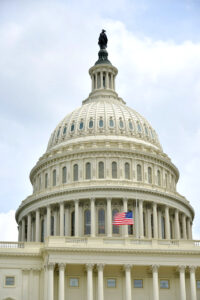What did we say?
|
BEFORE THE ELECTION |
AFTER THE ELECTION |
|
HOUSE 234 Republicans 201 Democrats (includes 1 vacant R seat, 2 vacant D seats) |
HOUSE 244 Republicans 184 Democrats 7 races still pending |
|
SENATE 55 Democrats (including 2 Independents who caucus with Ds) 45 Republicans |
SENATE 53 Republicans (net gain of 8) 46 Democrats |
You might have heard, but in case you were asleep last month, the Republicans had a pretty good day. The House remains under their control, and the Senate flipped 53-46 with one seat still to be determined. That’s the set up for the next 2 years, and, no matter what your feelings, the party in charge is preparing to make some changes. For the mortgage industry, some changes will bear watching. Dodd-Frank will likely be on the agenda as well as the CFPB. Will the party in charge look to create a ‘lite’ version of the two, or something more akin to scorched earth?
The Players
 For the mortgage industry, the central figures here are Congressman Jeb Hensarling from the Lone Star State of Texas, and Sen. Richard Shelby from the Yellowhammer State of Alabama.
For the mortgage industry, the central figures here are Congressman Jeb Hensarling from the Lone Star State of Texas, and Sen. Richard Shelby from the Yellowhammer State of Alabama.
Congressman Hensarling is the current Financial Services Committee Chairman and his position has been strengthened following the election. He introduced legislation in 2013 aimed at curbing and controlling GSEs Fannie and Freddie, and he is certainly neither an advocate for the CFPB nor Dodd-Frank. His agenda will surely put these agencies squarely in the line of fire.
Sen. Shelby regained his title as Chairman of the Banking, Housing and Urban Affairs committee. Likewise he has made clear his opposition to Dodd-Frank, asserting it is creating drastic changes to the financial system that are not fully thought out, and going so far as to claim Dodd-Frank will trigger the next crisis.
With these two on either side of the Capitol, Hensarling is poised to become far more aggressive in his push to limit and restrict Dodd-Frank. The current climate may limit his success, but it is reasonable to expect that some reform will happen under his stewardship with limited bipartisan backing. Hitting a homerun here seems unlikely because many interested parties (including those on Wall St.) see Dodd-Frank as a fait accompli, even if they stand against it. Further, while many see its effects as costly, those costs are generally seen as tolerable and likely to diminish as time passes.
Finally, nearly half of the regulations required under Dodd-Frank have yet to be written and those that are written will be interpreted according to regulators and congressional oversight committees. Both Sen. Shelby and Rep. Hensarling are in favor of replacing the CFPB’s current unilateral directorship with a five-member commission. As well, both would like to see the agency funded through annual appropriations rather than directly from the Federal Reserve.
Freddie, Fannie and the CFPB
Changed, gone, reduced? The Answer is: “Yes, no, maybe so”.
GSEs Freddie Mac and Fannie Mae are in the sites of the new Congress, but the target is moving. Hensarling wants to eliminate both and leave the FHA as the sole backstop to mortgage lending. That vision is, according to Christopher Whalen, senior managing director and head of research at Kroll Bond Rating Agency, ‘not feasible’.
The government bailed out Fannie and Freddie at the height of the crisis in September 2008 when both veered toward collapse after piling up losses on risky mortgages in the housing market bust. Together the companies received taxpayer aid totaling $187.3 billion. However, next month will see a $6.8 billion payment, more than repaying the bailout money they received. This fact alone may buy them some breathing room, if only temporarily.
 As for Freddie and Fannie, together they back almost half of all US mortgages, estimates being in the $5 trillion range. Altogether, with other agencies, they guarantee about 90% of new home loans. Disrupting them with wholesale changes may be politically difficult and fraught with fallout if the outcome damages housing.
As for Freddie and Fannie, together they back almost half of all US mortgages, estimates being in the $5 trillion range. Altogether, with other agencies, they guarantee about 90% of new home loans. Disrupting them with wholesale changes may be politically difficult and fraught with fallout if the outcome damages housing.
The fact that Freddie and Fannie returned to profitability last year indicates that the two GSEs are likely to continue unaltered to any large degree for the foreseeable future. Substantive reform of Freddie and Fannie will likely not happen before 2017 and then only if Congress and the President are in alignment. The more practical approach, according to Whalen, is to approach reform by attacking the CFPB.
With the Senate in Republican control, it’s important to note that proposed legislation to rein in the CFPB and possibly bring it under congressional oversight could surface in 2015. Senator Shelby is relegated to a 2 year run in his position due to term limits, so his focus may be to get the CFPB under congressional oversight first. He will undoubtedly see this term as a must-win sprint. After all, in about 12 months, aspiring presidential contenders from both parties will start crisscrossing the country and the 2016 elections will take up most of the effort from both sides, as well as the attention of their respective leaders.
[cwrcta id=’read-blog-sub-insiders’]
